Introduction
Released by Capcom in 1990, Nemo is a side-scrolling beat ’em up inspired by the animated film Little Nemo: Adventures in Slumberland. Unlike most brawlers of its era, Nemo took players on a whimsical, dreamlike journey through pastel-colored worlds filled with toys, monsters, and fantasy creatures. With its co-op gameplay, imaginative art direction, and creative level design, Nemo stands out as a visually rich and tonally unique entry in Capcom’s arcade catalog.
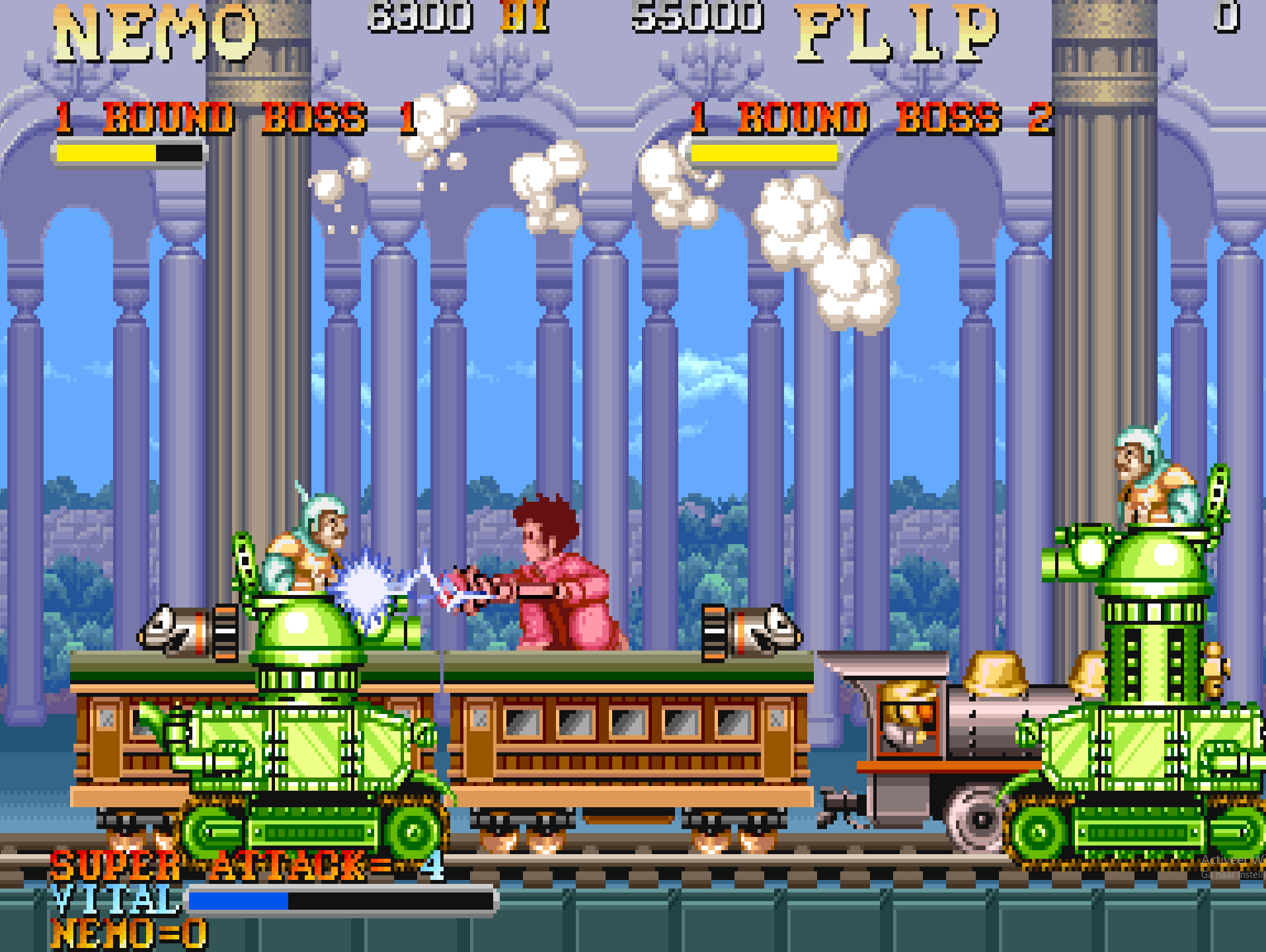
Development and History
- Developer: Capcom
- Publisher: Capcom
- Release Date: 1990
Following the success of Final Fight, Capcom sought to diversify its beat ’em up portfolio with a game that could appeal to both younger players and fans of fantasy. Nemo was developed alongside Capcom’s NES title Little Nemo: The Dream Master, but the arcade version leaned heavily into fast-paced action and cooperative play. Loosely based on the 1989 animated film (itself inspired by Winsor McCay’s comic strip), the game features two playable characters—Nemo and the mischievous Flip—battling through dream-inspired levels to rescue King Morpheus and Princess Camille.
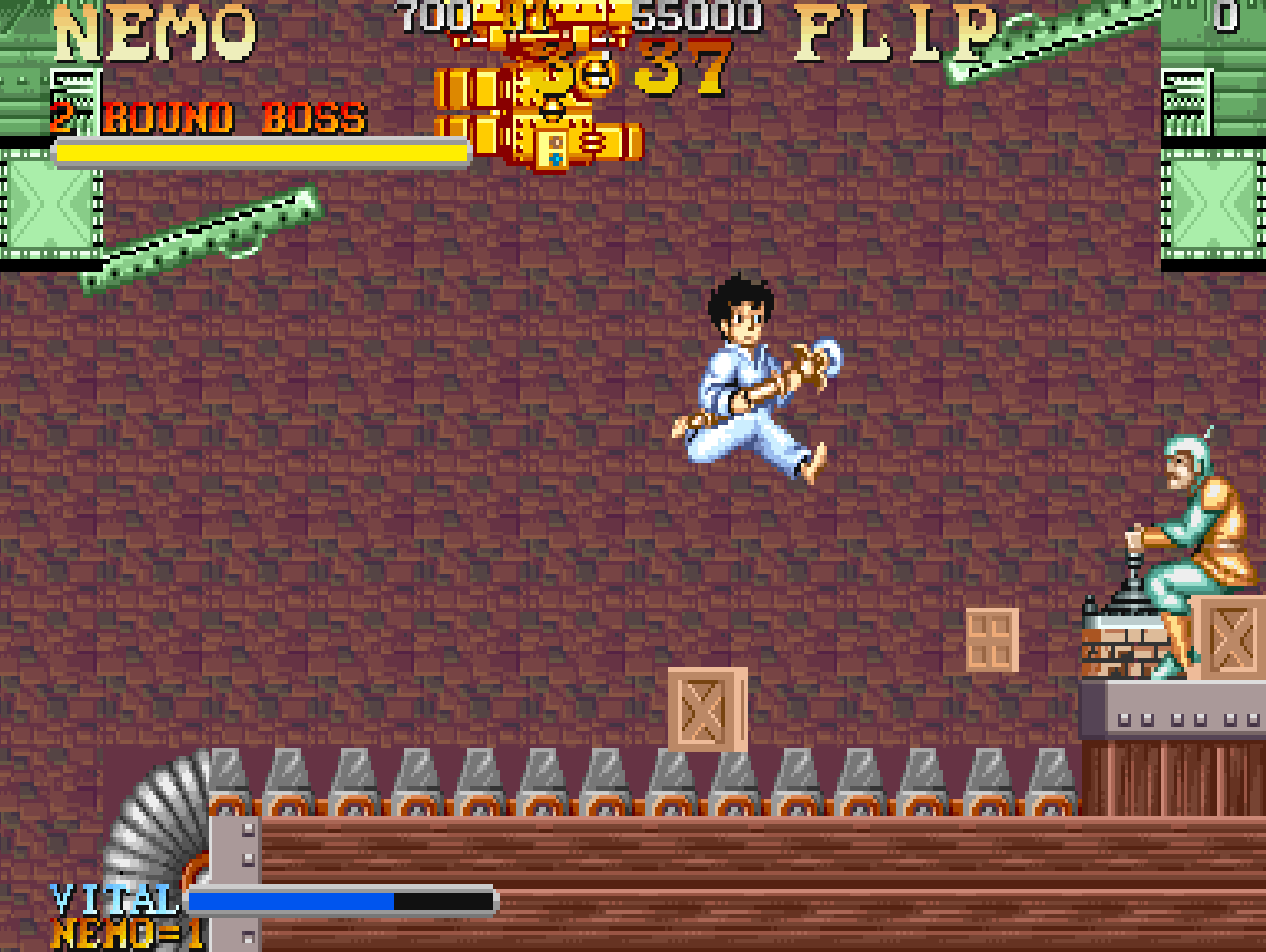
Gameplay Video
Gameplay and Mechanics
- Side-Scrolling Beat ’Em Up: Traditional left-to-right progression with enemy waves and boss battles.
- Two-Player Co-op: Players can control Nemo (with a candy cane weapon) or Flip (armed with a hook gun).
- Fantasy-Themed Stages: Each stage draws from Slumberland’s dream logic—cloud castles, haunted forests, toy lands, and more.
- Weapon Pickups & Magic Items: Players collect power-ups and magic to increase their attack range or special effects.
- Mild Platforming Elements: Certain stages require jumping between ledges and avoiding environmental hazards.
- End-Level Bosses: Each stage concludes with a creatively designed boss that fits the dream setting.
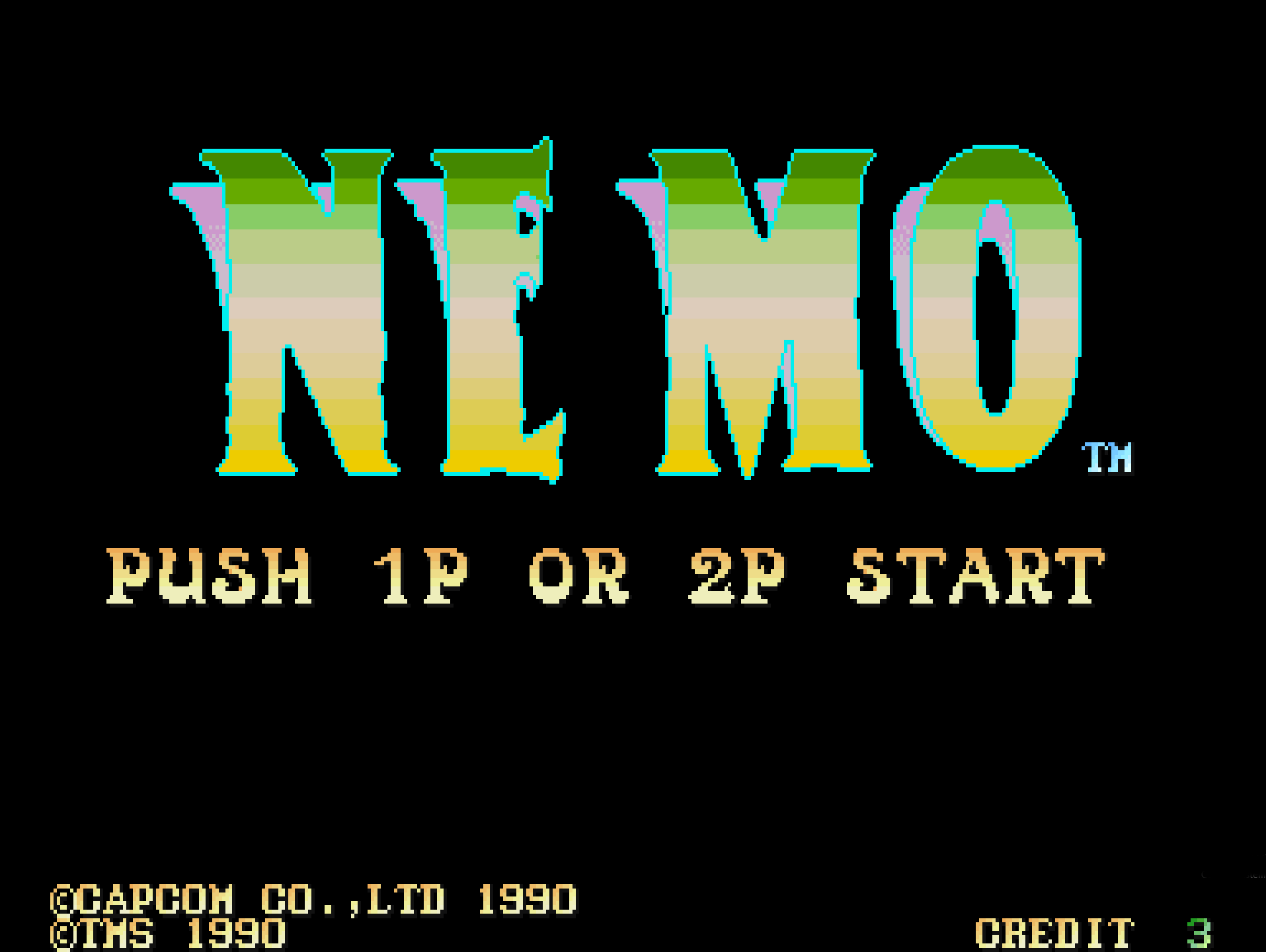
Cultural Impact and Legacy
While Nemo didn’t achieve the same commercial success as Capcom’s Final Fight or Cadillacs and Dinosaurs, it has earned a place as a cult favorite among fans of 1990s arcade games. Its visual presentation—featuring some of Capcom’s most colorful and surreal sprite work—set it apart in crowded arcades. The game’s connection to a lesser-known animated film, along with its high difficulty and distinctive aesthetic, helped it gain a reputation as one of Capcom’s most artistic beat ’em ups.
Though it never received a sequel, Nemo is remembered fondly for its charm, challenge, and creative design. It continues to appear in fan-curated lists of underrated arcade titles and remains a nostalgic favorite among collectors and retro gamers.
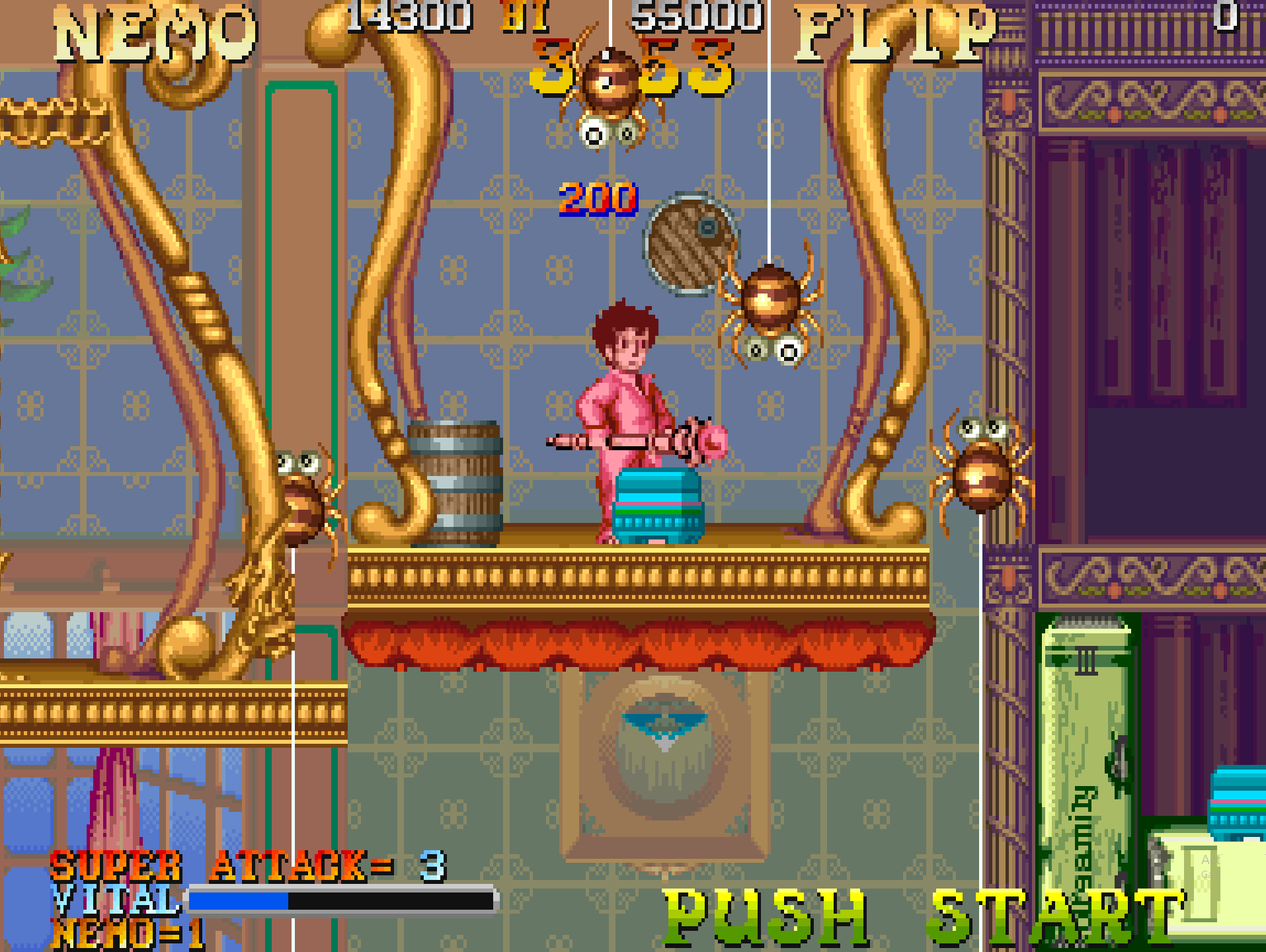
Fun Facts
- Nemo and Little Nemo: The Dream Master were developed separately and have entirely different gameplay styles.
- The arcade version includes levels and characters not found in the film or NES game.
- Flip’s hook gun was invented solely for the arcade game—it doesn't appear in the movie.
- The game features some of Capcom's most dreamlike stage names, including “Magic Forest,” “Toy House,” and “Shrine of Dreams.”
- Despite its child-friendly visuals, Nemo is notoriously challenging, especially in the later levels.
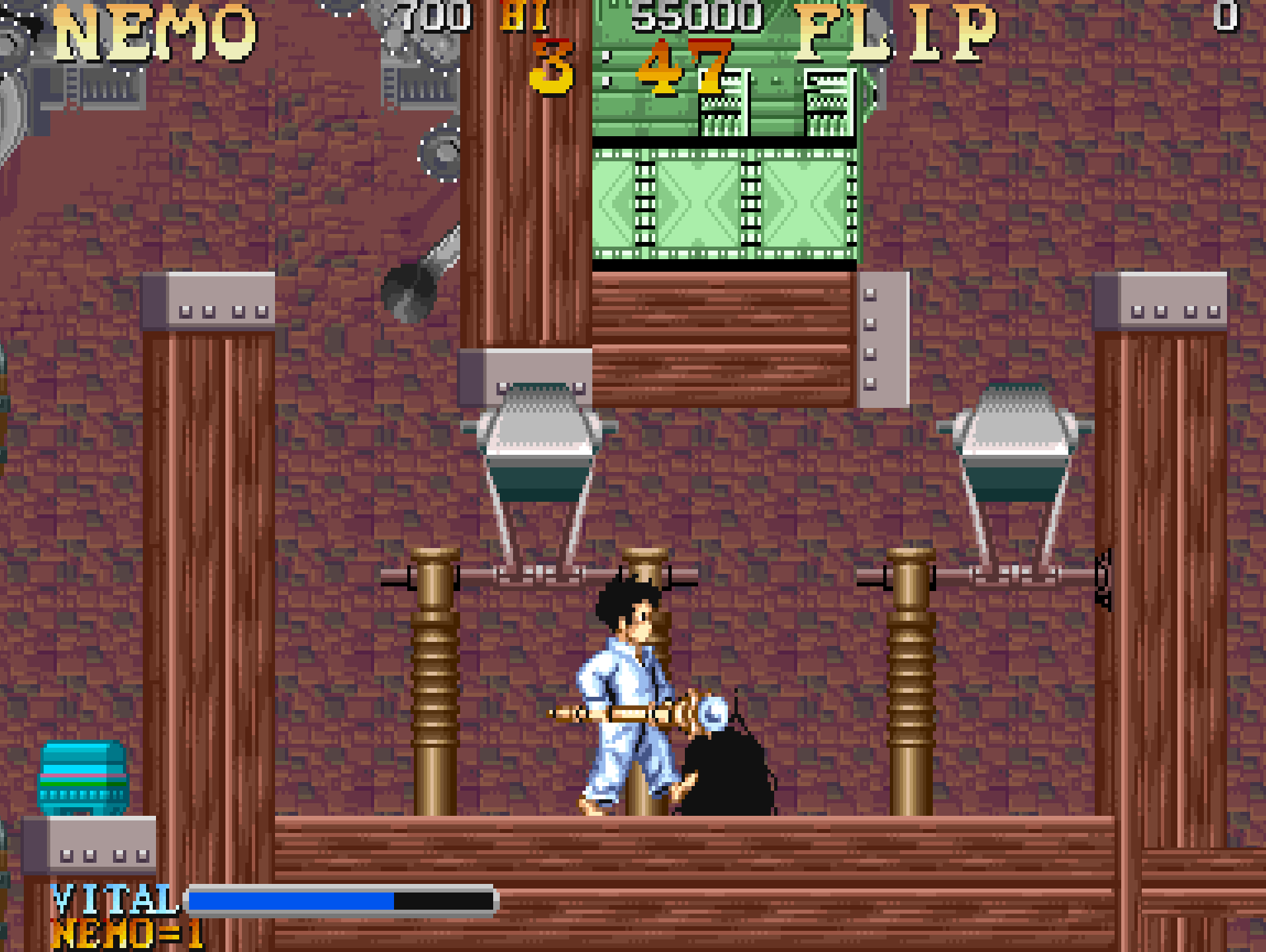
Conclusion
Capcom’s Nemo is a rare example of a beat ’em up that trades grit for wonder. With imaginative levels, gorgeous sprite work, and solid co-op action, it offers a dreamlike detour from the usual urban brawlers of the early ’90s. For fans of fantasy-themed arcade games or hidden gems in Capcom’s lineup, Nemo is well worth revisiting.
Want to Go Deeper Into Arcade History?
If this game left you craving more, dive into the complete stories behind some of the most iconic arcade genres and franchises. These articles explore the rise, innovation, and legacy of the games that shaped arcade culture:
- Top 25 Hidden Gem Arcade Games of All Time - Unearth the overlooked classics that still shine bright for arcade enthusiasts today
- Top 25 Beat ’Em Up Arcade Games of All Time – Discover the ultimate ranking of the greatest beat ’em ups ever to hit arcades
- The History of Beat ’Em Up Arcade Games – From Double Dragon to Final Fight, here’s how brawlers ruled the late ’80s.
- Donkey Kong’s Rise to Fame: How a Desperate Bet Created a Gaming Legend – The untold story of how Nintendo turned failure into a global icon, launching Mario, Miyamoto, and a new era of arcade storytelling
- The Economics of Arcade Gaming: The Golden Age of Coin-Op – This article explores the full arc of arcade economics: the explosive rise, the industry-shaking crash, and the waves of reinvention that kept the business alive
- The Complete History of Mortal Kombat Arcade – How a gritty fighter became a pop culture phenomenon.

